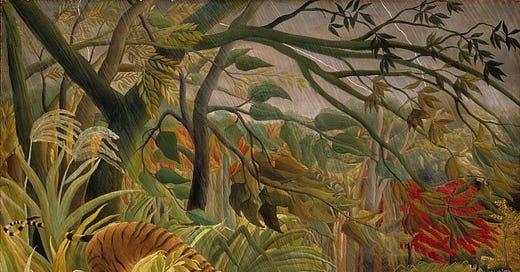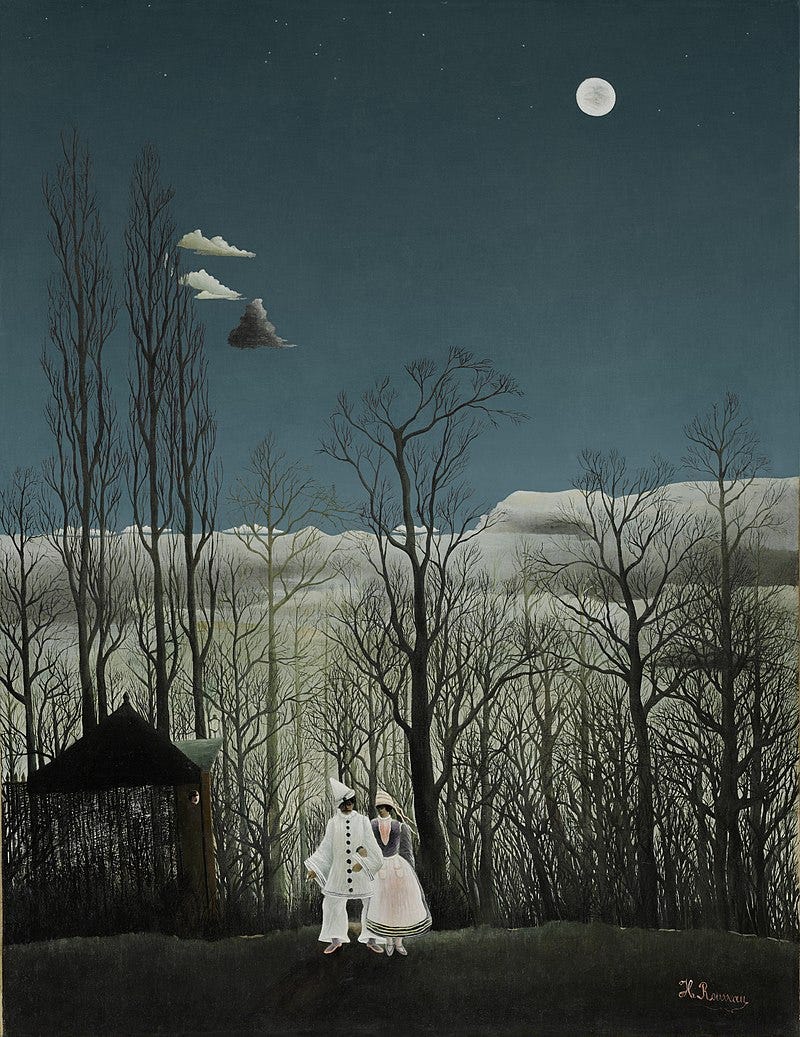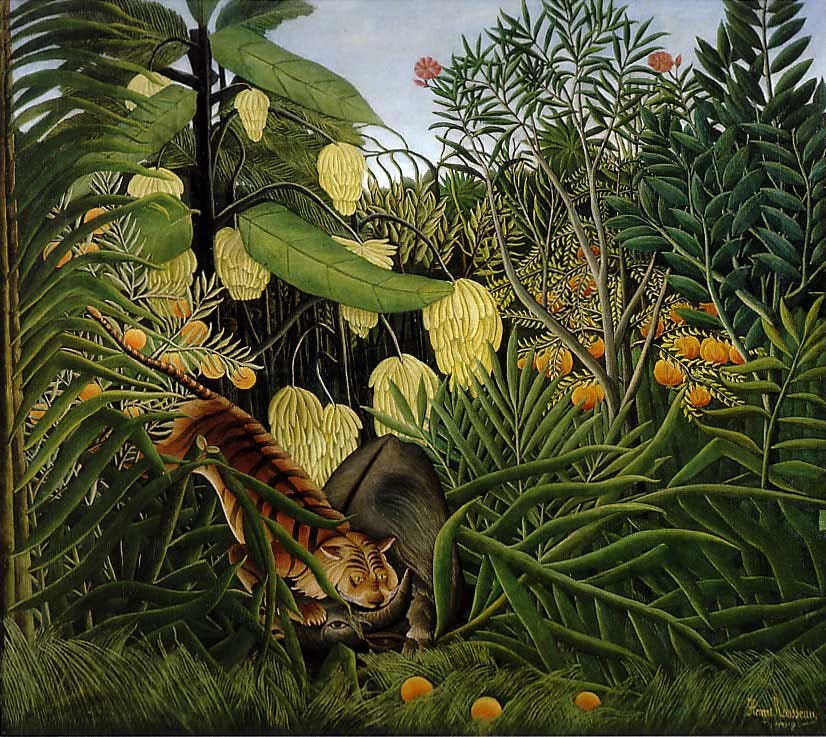Tiger in a Tropical Storm - Henri Rousseau
How to pretend to have been traveling while not moving at all.
Artist’s life & Conception
Henri Rousseau (1844-1910) started his career as a customs officer in Paris, which which earned him the nickname of “Douanier” Rousseau (French for customs officer). This nickname was often used by art critics to mock his work, which many considered naive. Rousseau was a self-taught painter who worked on his art in his spare time, leading to him being frequently referred to as a “Sunday painter”.
In 1885, he unsuccessfully attempted to exhibit at the official Salon but found success the following year at the Salon des Indépendants, thanks to the absence of an entry jury. He exhibited four paintings there, including ‘A Carnival Evening’, which attracted little attention and a lot of sarcasm from critics.
Rousseau continued to exhibit his works almost every year in the Salon des Indépendants. ‘Tiger in a Tropical Storm’ was shown in the edition of 1891, and is known as his first painting taking scene in jungles, a theme that would become common in his later works.
Rousseau claimed to have observed exotic landscapes while serving as a soldier in Mexico in 1860. There was indeed a French intervention in Mexico which took place until 1867 to establish a Catholic regime favorable to French interests and to counterbalance the growing power of the Protestant United States.
Yet Rousseau never left the French territory. His knowledge about tropical landscapes is said to have come from Parisian gardens, like the Jardin des Plantes or the Jardin d’Acclimatation, and from illustrated books.
Two years after the release of ‘Tiger in a Tropical Storm’, Rousseau was able to officially retire from his customs job and focus on his art.
The Painting and its Influence
When Rousseau's masterpiece ‘Tiger in a Tropical Storm’ was first exhibited, one of the most criticized aspects was the flat appearance of the figures and planes. Something that history and art critics have corrected, recognizing the many techniques that have been used by the painter to create his ‘Tiger’:
The composition is dominated by an exaggerated vegetation, with the extensive use of green shades filling most of the canvas, leaving only glimpses of the stormy sky visible;
The simplified forms, along with their vibrant colors, create a dreamlike vision despite the storm;
To obtain the scathing rain, Rousseau painted fine streaks of silver paint diagonally across the entire canvas, which contributes to the unusual three-dimensional effect of the work despite the “flat” plans.
In the middle of this lush jungle, the center of our attention remains the tiger. It is the only mobile living being in this painting and yet appears immobile. Despite never having observed a tiger, Rousseau painted them several times.
The tiger, illuminated by lightning, seems about to pounce on an unseen prey. Another known title of this painting is ‘Surprised!’, which appeal to our imagination. Is the tiger surprised by the lighting or the viewer in the middle of its hunt? Is the prey or the viewer, a man in the tropical forest, surprised by the presence of a tiger?
And this is, actually, the greatest strength of this picture: it is all about the viewer’s imagination to determine what is beyond the limits of the canvas and the outcome of this scene.








I love Henri Rousseau so much, and The Snake Charmer has been living in my head ever since I was 7 for a reason I couldn't articulate. Now I see "it is all about the viewer’s imagination to determine what is beyond the limits of the canvas". Thanks!